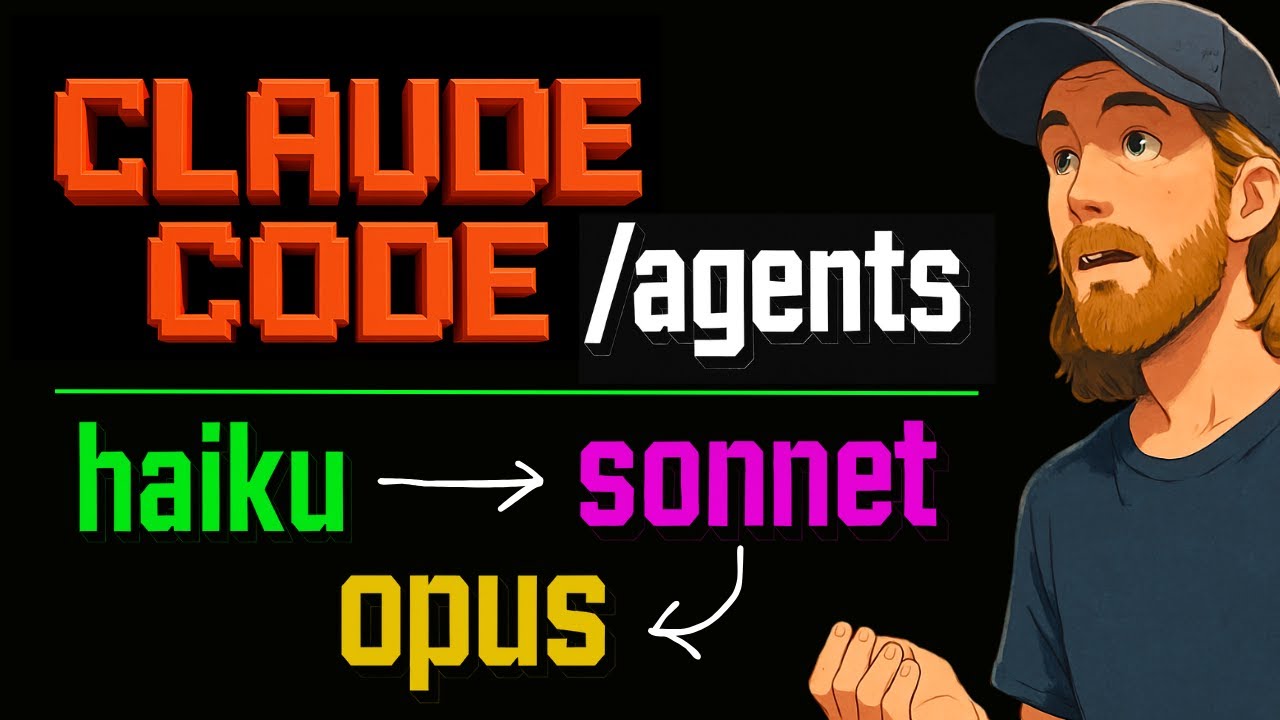The video demonstrates a new Claude Code feature that lets users assign different Claude models—Haiku, Opus, and Set—to individual subagents, optimizing performance and token usage based on task complexity. Through examples like a dice roller and a multi-agent project workflow, the streamer highlights how strategic model assignment enhances speed, efficiency, and overall productivity.
In the video, the streamer explores a significant new feature in Claude Code that allows users to assign different Claude models—Haiku, Opus, and Set—to individual subagents. This update provides greater flexibility in managing agents by tailoring the model choice to the specific task, potentially saving time and tokens. The streamer demonstrates this by creating a simple dice roller agent and testing it across the three models to compare performance and response times.
The streamer begins by setting up a dice roller agent tasked with simulating ten rolls of a six-sided die. They first assign the Opus model to this agent and measure the time it takes to complete the task, which is around one minute. Next, they switch the model to Set, which completes the task significantly faster, in about 17 seconds. Finally, they test the Haiku model, which performs the task even quicker, finishing in approximately 7.5 seconds. These tests highlight the performance differences between the models and suggest that Haiku is well-suited for simple, fast tasks.
Following the dice roller tests, the streamer experiments with a more complex multi-agent workflow involving three agents assigned different models based on their roles. The first agent, a planner, uses the Opus model to create a sprint plan for a project. The second agent, responsible for execution, uses the Set model to build a Bitcoin price tracker app. The third agent, a documentation writer, uses the Haiku model to generate project documentation. This setup demonstrates how assigning models strategically can optimize the workflow by leveraging each model’s strengths.
The multi-agent chain works smoothly, with the planner generating a detailed sprint plan, the executor building the app efficiently, and the documentation agent quickly producing a README file. The streamer notes that using Haiku for documentation is more efficient than using a heavier model like Opus, which would be overkill for such a task. The video also points out how the context tokens are managed and passed between agents, showing the practical benefits of this modular approach.
In conclusion, the video showcases the practical advantages of the new Claude Code feature that allows model assignment per subagent. By selecting the appropriate model for each agent’s task, users can optimize speed, efficiency, and token usage. The streamer expresses enthusiasm about experimenting further with this feature to refine workflows and improve overall productivity in multi-agent setups. This update represents a meaningful step forward in customizing AI agent behavior within Claude Code.
